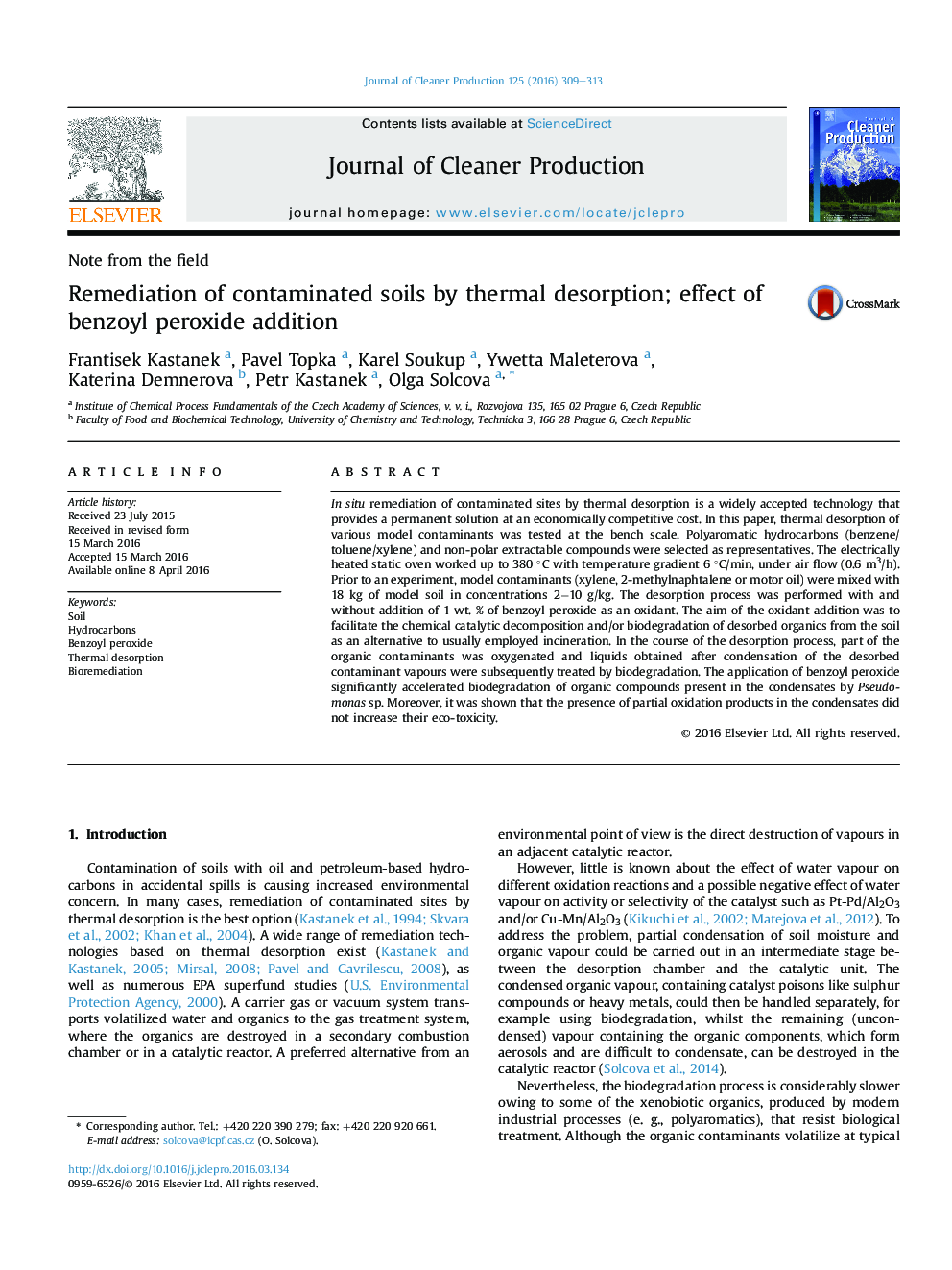| Article ID | Journal | Published Year | Pages | File Type |
|---|---|---|---|---|
| 8102253 | Journal of Cleaner Production | 2016 | 5 Pages |
Abstract
In situ remediation of contaminated sites by thermal desorption is a widely accepted technology that provides a permanent solution at an economically competitive cost. In this paper, thermal desorption of various model contaminants was tested at the bench scale. Polyaromatic hydrocarbons (benzene/toluene/xylene) and non-polar extractable compounds were selected as representatives. The electrically heated static oven worked up to 380 °C with temperature gradient 6 °C/min, under air flow (0.6 m3/h). Prior to an experiment, model contaminants (xylene, 2-methylnaphtalene or motor oil) were mixed with 18 kg of model soil in concentrations 2â10 g/kg. The desorption process was performed with and without addition of 1 wt. % of benzoyl peroxide as an oxidant. The aim of the oxidant addition was to facilitate the chemical catalytic decomposition and/or biodegradation of desorbed organics from the soil as an alternative to usually employed incineration. In the course of the desorption process, part of the organic contaminants was oxygenated and liquids obtained after condensation of the desorbed contaminant vapours were subsequently treated by biodegradation. The application of benzoyl peroxide significantly accelerated biodegradation of organic compounds present in the condensates by Pseudomonas sp. Moreover, it was shown that the presence of partial oxidation products in the condensates did not increase their eco-toxicity.
Related Topics
Physical Sciences and Engineering
Energy
Renewable Energy, Sustainability and the Environment
Authors
Frantisek Kastanek, Pavel Topka, Karel Soukup, Ywetta Maleterova, Katerina Demnerova, Petr Kastanek, Olga Solcova,
